Light Pass Road, Light Pass
B 1925 J.E. Dodd. 1 manual, 7 speaking stops, 1 coupler, tracker
Man (all divided): 16.8.8.8.4.2. Ped:16.
Altns c.1977 J.E. Dodd & Sons Gunstar Organ Works.
Man : (all divided) 8.8.8.4.2 II-III. Ped:16.
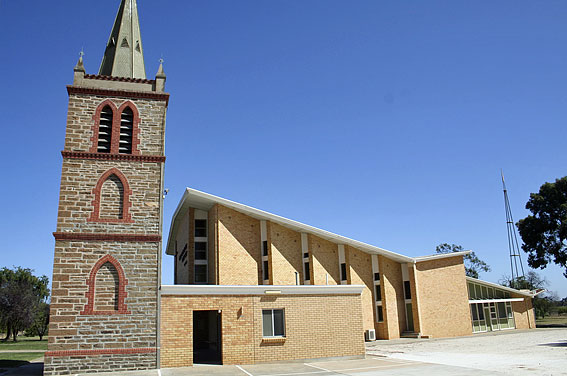
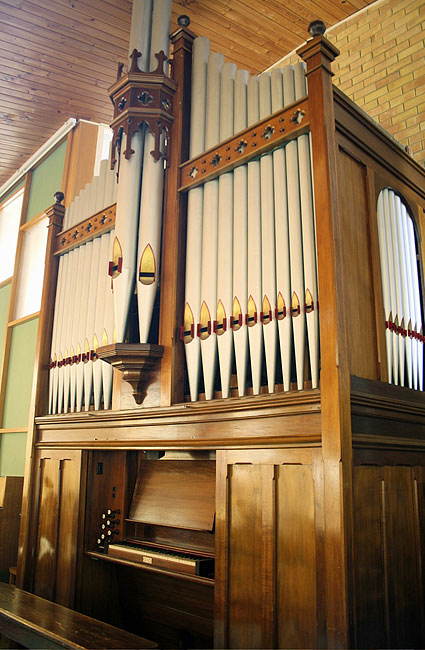
From Historic Organs of the Barossa Valley, Volume 2:
North of Nuriootpa, the North Para River wends a meandering course across the flats. A German settlement of colonists from Klemzig sprang up at Light's Pass and Immanual Lutheran Church was built. In 1860 seven families in the District called teacher Gustav Julius Rechner to be their pastor and one year later their church, barely 100 metres from Immanuel, was dedicated and named Zur Engen Pforte. The tower was built in 1887. The Church expanded and, like St Petri, Nuriootpa, a modern structure replaced the original building. The organ is said to be the last single manual organ made by J.E. Dodd and is one of only three extant. Correspondance suggests the congregation had been influenced by the Lemke at nearby Immanuel, as Dodd was asked as to the feasibility of constructing foot treadles to supply the wind, a notion that was rejected.
The specification is: (6 stops, all divided)
| Manual Open Diapason Lieblich Gedact Dulciana Principal Fifteenth Mixture Tremulant Pedal Bourdon Manual to Pedals |
8 8 8 4 2 II-III 16 |
Mechanical action
Around 1977 the Bourdon was removed from the Great and replaced with a Mixture by J.E. Dodd & Sons Gunstar Organ Works.
From
the 2009 OHTA Conference Book,
David Shield writes:
The
congregation at Strait Gate dates from 1860 when several families left the
adjacent Immanuel Church and set about forming a congregation of their
own. They called the schoolteacher
from Immanuel, Gustav Julius Rechner, to be their Pastor and he remained
till1900. Their first building was
dedicated the following year and “an old pipe organ was used for the time
being”.1 In 1871, a
large bell was bought and placed on a platform near the church before being
relocated to the tower built in 1877.
In 1960, a new church replaced the old. The bell tower was retained.
Having
outgrown their previous church, the congregation determined to build a new
one. Sir Eric Von Schramek
submitted his design “with trepidation”.
Of all his designs, he saw this as his most contemporary church. In his own words, he relates “a
traditional design would have met with criticism and discussion whilst my
radical contemporary design was accepted without dissent.” Von Schrameck retained the old church
tower and added a new structure. A
blank brick front wall without windows and with just a relatively narrow
entrance door bears the Gospel verse “Enter ye in at the Strait Gate”. The triangular shape of the building
represented the Holy Trinity with the slanted sides drawing the worshipper’s
focus to the sanctuary area. All
windows faced the sanctuary and the ceiling also sloped towards the altar of
local Angaston marble. The reredos
was to be a coloured window showing the stormy sky at Golgotha with a simple
black cross over the altar.2
The
bell tower houses a single bronze bell cast by Fr. Gruhl at the Kleinwelka
foundry, Germany, in 1872. It
weighs 456 kg and the mouth diameter is 915mm, ringing out the tone of G#. In addition, it has the decorative band
in high relief and cherub heads on the crown, typical of bells from that
foundry.3
In
April 1924, J.F. Jacob of Light Pass made enquiries of J.E. Dodd with respect
to the purchase of a single-manual organ.
Reading between the lines, it would seem he modelled his request partly
on the Lemke organ at Immanuel. It
was to be foot blown, a notion Dodd completely rejected, though he allowed for
both hand and foot pumping. “I do
not advise the foot blowing as it is always unsatisfactory to every one
including builder - But the price includes both.” From Dodd’s reply the organ needed to fit into a space with
12 feet of height, though Dodd would have preferred 16 feet. Dodd drafted three separate replies for
five, six, and seven rank instruments ranging in price from £325 to £490. He also suggested that unless the
church intended adding a second manual in future that the stops should all be
divided. In Dodd’s view, a
one-manual organ was very little good unless this was the case.4
Holy Trinity, Adelaide had also made enquiries of
Dodd concerning a new organ.
Knowing this, he prompted Strait Gate to consider the potentially
redundant Rendall organ as suitable for their needs. There was supposedly a demand for second hand organs, “as
new ones cannot be built as fast as the Churches would like as no one else knows about this
instrument for sale, gives you the first chance”. The congregation did not follow Dodd’s prompting and
proceeded to purchase a new organ.5
The
current specification suggests the church chose Dodd’s five stop option, the
organ being acquired in 1925.
Whether the Bourdon was included or added later is not known. Prior to 1937, the bellows were hand
pumped with members rostered for the purpose. The blower, now under the northern staircase, arrived with
the coming of electricity. With
the advent of the new church in 1961, Sid Gunn and Bill Binding, original
installers of Gunstar Organ works, reassembled the organ in the gallery of the
new church in 1961. A Mixture was
added in 1978 from a member’s donation.6 The organ has 231 pipes, with 15 stops, divided between
treble and bass. Of historic
interest, it features in the 1960s film Pipes of Para.
J.E. Dodd & Sons 1925
1 manual, 7 speaking stops, mechanical action
|
MANUAL (all stops
divided) |
|
|
|
Open Diapason |
8 |
|
|
Lieblich Gedact |
8 |
|
|
Dulciana |
8 |
|
|
Principal |
4 |
|
|
Fifteenth |
2 |
|
|
Mixture |
II-III |
(on original Bourdon
slide) |
|
Tremulant |
|
|
|
|
|
|
|
PEDAL |
|
|
|
Bourdon |
16 |
|
|
Coupler to Pedals |
|
|
Compass 61/30
Tremulant
2 composition pedals
Balanced swell pedal
Location: west gallery
1 Church pamphlet: Strait
Gate Lutheran Church Light Pass SA
(c 1994). Nothing further is known
of this organ.
2 Von Schramek, E., Reminiscences:
Erik von Schramek and his Churches
(2007), pp.72-73. The window is
the work of Polish artist Stan Ostoja-Kotkowski (1922-1994); Church brochure: Welcome
to the Strait Gate Lutheran Church Light Pass (c.2005)
3 Bagot, H., ‘Bells of
the Barossa’, Journal of Friends of Lutheran Archives, no 10 (October 2000), p.16. Note brochure c.2005 op.cit. says the
pitch is A. Bells from Kleinwelka
may also be found at Keynton (1874) with a two-bell peal at Dutton (1890)
4 Dodd to J.F. Jacob 16
April 1923, DLB 1922-25,
pp.241, 242, 243-244
5 Ibid. 18 April 1923,
pp.251-252. Dodd probably assumed
he would win a contract with Holy Trinity but had no authority to give any
information to Strait Gate. His
action was premature as his competitor W.L. Roberts supplied Trinity’s needs.
6 Church information
sheet: The Strait Gate Organ
(n.d.)
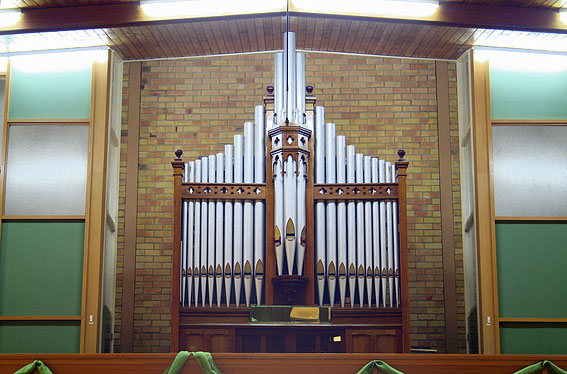
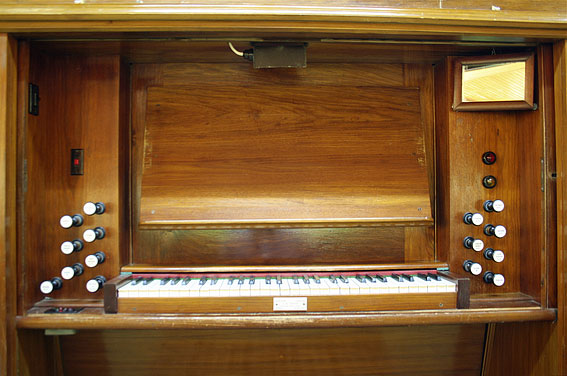
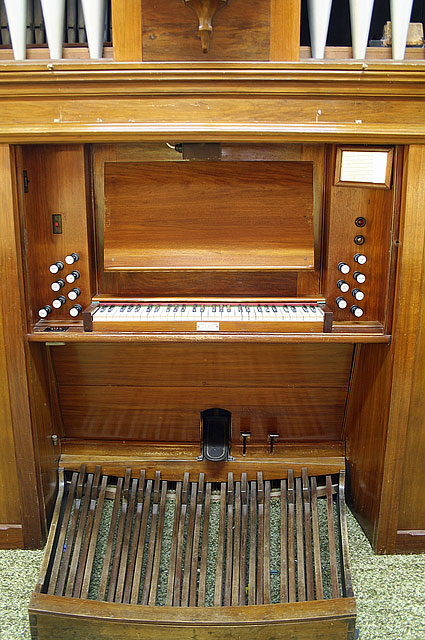
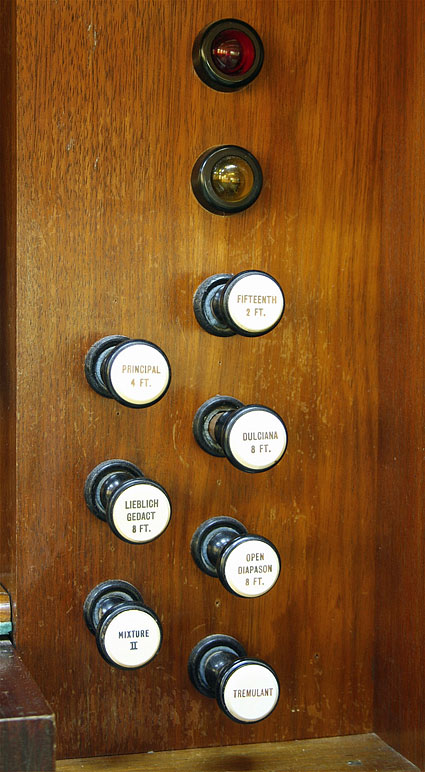

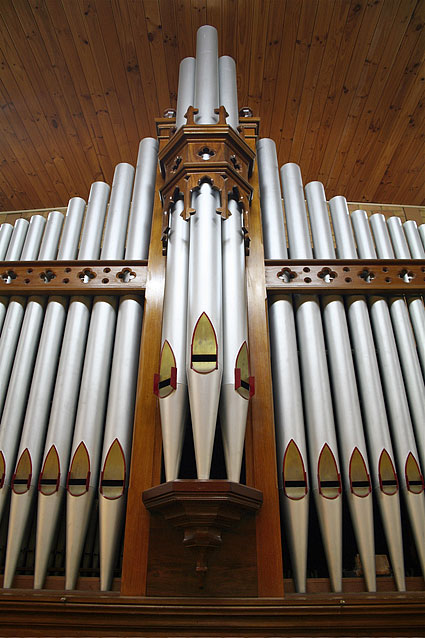

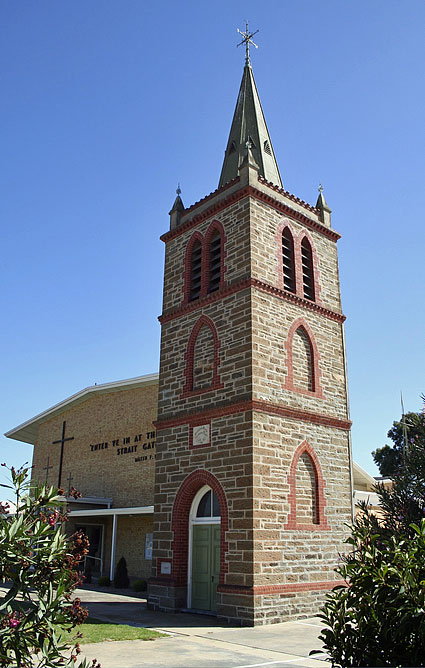
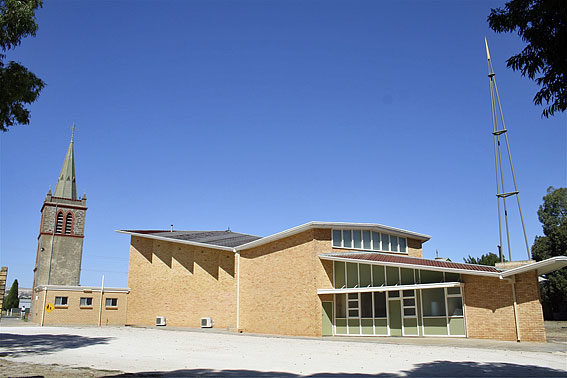
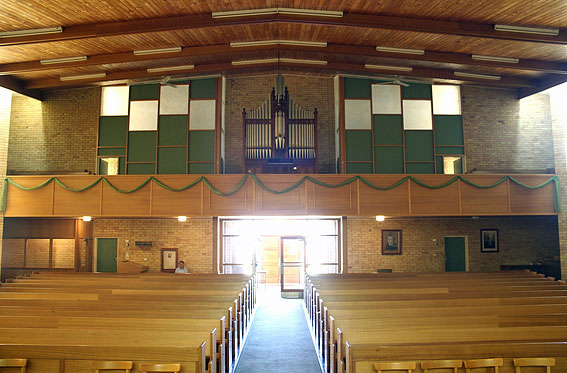
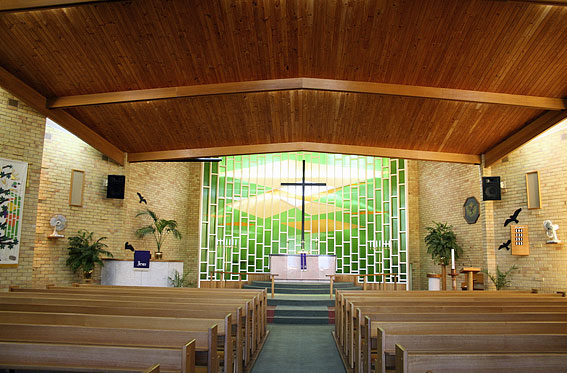
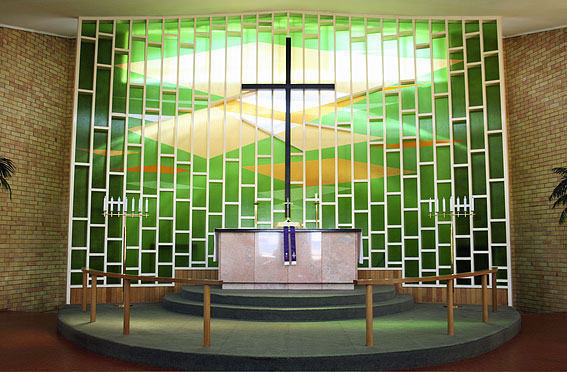
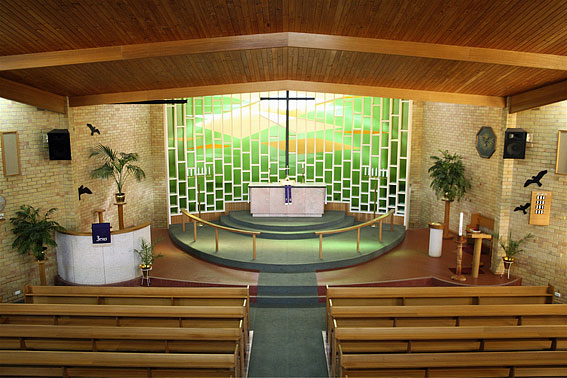
Photos: Trevor Bunning (March 2009)